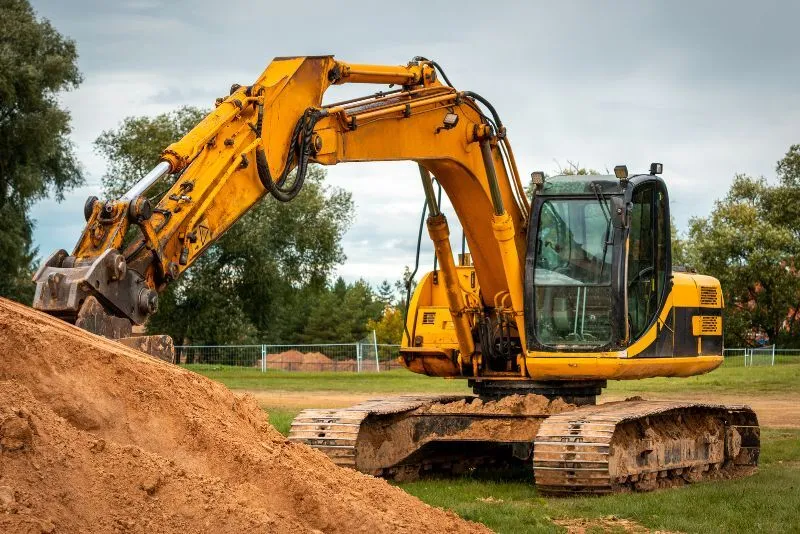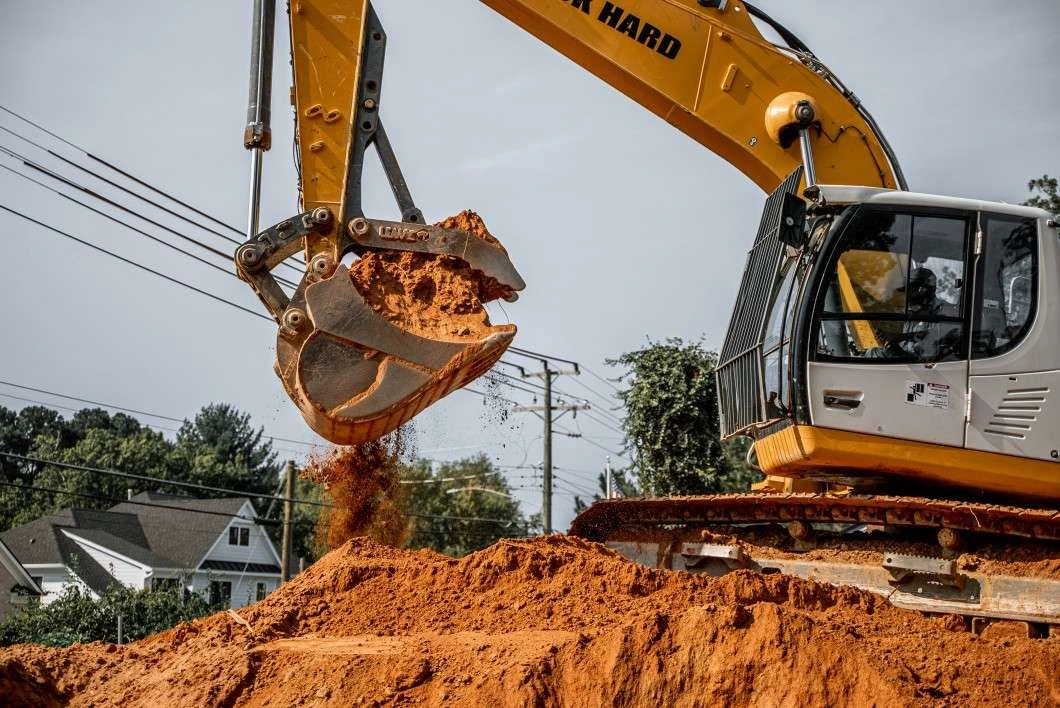For any builder, homeowner, or dream-home planner in Orange, excavation services in Orange might first look like nothing more than roaring machines and piles of soil. But in reality, every scoop of earth tells a deeper story.
What might look like brute force is actually a carefully choreographed dance between science, engineering, and experience. Beneath every slab, driveway, or swimming pool lies the invisible groundwork of precision excavation — and that’s where the real magic begins.
Before the first digger even touches the soil, engineers and surveyors get to work studying the land. They test soil density, identify underground utilities, and evaluate drainage patterns — because in Orange, one patch of earth can be rich volcanic clay, while another hides stubborn basalt rock just below the surface. It’s this unpredictable terrain that makes local Excavation Services in Orange such a unique craft.
Modern excavation is no longer guesswork. Today’s contractors rely on GPS-guided excavators, laser levels, and even drone mapping to plan and execute every movement with surgical precision. The operator sitting in that excavator cab isn’t just moving dirt; they’re sculpting the foundation of your future home, making sure every millimetre aligns with the engineer’s design.
So before your new deck, driveway, or dream home rises from the soil, take a moment to appreciate what’s happening beneath it. There’s a hidden science at work — one that blends geology, innovation, and experience. Let’s dig a little deeper into the world of excavation services in Orange, and uncover the expertise that keeps your project standing tall.
Excavation Services in Orange: The Role of Local Geology
Orange sits in a geologist’s playground. We literally live on an old volcano: fertile basalt from Mount Canobolas gave us rich vineyard soils. But those volcanic soils break down into heavy clay and rocky saprolite. In fact, studies show Orange often has only a couple of metres of topsoil over dense clay (saprolite) from weathered lava.
For excavation crews, this matters a lot. Clay can stick to buckets and collapse on edges, while hidden basalt corestones (big chunks of rock) can surprise even the burliest digger. Imagine digging through moist orange clay one minute, then hitting a chunk of hard rock the next!
To cope, pros test and adapt. They might drill small samples or even use ground-penetrating radar – an “MRI” for the earth – before the first shovelful moves. Every project often starts with this hidden science lesson so foundations don’t crack later.
High-Tech Earthmoving in Orange: Tools of the Trade
Modern excavators are basically earth-moving robots. Today’s machines come loaded with GPS and AI so they can follow digital plans with surgical precision. For example, a skilled operator can align “every scoop” of the bucket within a few centimeters of the target depth. Even small machines pack a tech punch: cameras, sensors and wireless controls mean a bulldozer or skid-steer loader can level land or haul soil exactly where it needs to go.
Drones and 3D scanners join the crew too, mapping the site from above to update the project plan instantly. In short, our dig sites now look like high-tech construction zones rather than random pits.
| Equipment | Typical Use |
|---|---|
| Excavator | Large-volume digging (foundations, trenches) |
| Bulldozer | Pushing and grading large amounts of soil |
| Backhoe Loader | Versatile medium digger for trenches or tight spaces |
| Skid Steer (Bobcat) | Compact loader for small digs and finish grading |
Each tool has its job. For example, one Orange earthmoving company described a recent backyard job: “We used a 7 ton excavator to dig out areas for a septic tank… removing all the rocks and debris, [then] brought in top soil and spread [it] level”.
That quote shows it all: the excavator digs deep, a loader cleans rocks, and then the team brings in new soil to finish the job flat. It’s teamwork between machines and people – powered by data.
The Hidden Factors That Influence Excavation Services in Orange
Every excavation job in Orange comes with its own personality — shaped by nature, location, and logistics. Even if two properties are just a few streets apart, the challenges below ground can be completely different. Here’s what really determines the scope, cost, and complexity of your excavation services in Orange:
1. Soil Type and Ground Conditions
Orange’s volcanic past gives us beautiful red soils — but also stubborn clays and basalt. The deeper crews dig, the tougher it often gets.
- Soft loam or sandy soil makes for easier digging but can collapse without proper shoring.
- Heavy clay needs powerful machinery and sometimes drying agents to prevent it from sticking.
- Basalt rock? That’s when the excavator’s hydraulic hammer gets its workout.
Pro tip: Local contractors often inspect the soil beforehand so they can bring the right bucket, attachments, and safety measures.
2. Site Accessibility
Some Orange homes sit on narrow suburban blocks or steep hillsides with tricky access. Big machines can’t always squeeze through side gates or navigate tight bends.
- Compact excavators or mini diggers often save the day in residential zones.
- In large rural properties, wide access and open space allow for faster, large-scale digs.
The layout of your site can easily change how long a project takes — and how much it costs.
3. Weather and Timing
Excavation is at the mercy of Mother Nature. Orange’s weather — from frosty winters to sudden downpours — can influence soil moisture and machine performance.
- After heavy rain, clay soils turn into sticky messes that stall work.
- In dry spells, hard-packed ground can dull tools and overheat equipment.
That’s why experienced excavation services in Orange often schedule digs strategically around local weather forecasts.
4. Project Scale and Depth
A simple trench for plumbing is worlds apart from an entire foundation excavation.
- Shallow jobs (under 1m) are faster, often done in a day.
- Deep foundation or pool excavations can take several days and require safety barriers, shoring, and specialised machinery.
The deeper you go, the more the risk, time, and cost increase — but precision is key either way.
5. Regulations and Permits
Even dirt needs paperwork. The Orange City Council has clear guidelines for site disturbance, erosion control, and stormwater management. You may need permits for:
- Major cut-and-fill work that alters drainage or slope
- Excavations near property boundaries
- Projects over a certain depth or area
You can check the Orange City Council’s development and excavation requirements on their official website. Always ensure your contractor is licensed and compliant — it saves you from costly fines or delays.

Reference Table: What Affects Excavation in Orange
| Factor | Impact on Project | Typical Considerations |
|---|---|---|
| Soil Type | Determines equipment and effort required | Clay, loam, or basalt |
| Access | Affects machine size and timeline | Narrow driveways or slopes may need smaller diggers |
| Weather | Influences schedule and soil condition | Rain delays, dry soil compaction |
| Depth & Size | Increases time, safety needs, and cost | Deep digs need shoring and inspections |
| Permits & Regulations | Ensures legal and safe operation | Council rules, erosion control, environmental impact |
From Plans to Pits: The Excavation Process
So, in practice, excavation services in Orange might mean clearing a site, digging trenches for utilities, or grading a sloped yard level. Each job is done in stages:
- Site Clearing: Removing trees, brush or old slabs to expose bare ground.
- Trenching: Digging trenches for plumbing, electrical cables, stormwater drains or footings.
- Foundation Excavation: Carving out holes or pads for house footings, pools, sheds, etc.
- Grading & Leveling: Smoothing ground with bulldozers or graders so water drains properly.
- Backfilling & Compaction: After pipelines or concrete are set, filling trenches back in and compacting the soil to prevent future settling.
Nothing is random. Dirt from one area might be stockpiled and reused elsewhere on the site. Heavy equipment does the rough work, and then a bobcat or roller finishes the surface for concrete or turf. Think of it like cooking with precise measurements: every shovelful of earth is an ingredient.
Safety First: Digging with Care
Excavation isn’t without risks. In NSW, any trench deeper than 1.5m is treated as high-risk work. Crews must follow strict safety rules:
- Call Before You Dig: Always contact 1100 (Dial Before You Dig) to mark underground gas, electrical or water lines.
- Shoring and Benching: Trenches over 1.5m must have supports (shoring, trench boxes or bench slopes) to prevent collapse.
- Emergency Planning: Crews carry a rescue plan on-site. SafeWork guidelines say it must cover scenarios like trench cave-ins or gas leaks and outline how to rescue a trapped worker.
- Professional Procedures: Operators approach trenches carefully (usually from the side, not parallel, to avoid overloading edges). High-visibility clothing, hard hats and spotters are standard. Even smart wearables and drones are used today to monitor worker health and spot hazards.
In short, everything is designed to avoid accidents. As one code puts it, if you can’t eliminate a hazard (like a deep hole), you must engineer a safe way around it. The only thing faster than a digger down here is the focus on safety above it.
Green Digs: Sustainable Earthworks
Excavation doesn’t have to be dirty business (aside from the inevitable mud). Builders are adopting greener practices:
- Electric and Hybrid Machinery: The latest excavators and loaders run on electric or hybrid power, emitting “zero to low emissions” on site. It’s like swapping your diesel car for an EV, but for a bulldozer.
- Erosion Control: Straw bales, sediment fences and drain channels capture soil and debris during rain, keeping it off roads and creeks.
- Material Recycling: Surplus dirt, rock and concrete are reused whenever possible. Clean fill might go into landscaping, while crushed concrete becomes road base. Topsoil is stockpiled and spread back after the build.
- Site Rehabilitation: After work, crews often re-seed grass, plant shrubs or restore habitats to stabilize the earth. They aim to “leave no trace” aside from a level pad ready for construction.
The result: an excavation site that tries to mimic nature rather than scar it. Smart planning and tech (even sensors that detect water or moisture) keep things efficient. In other words, even digging is catching up with Silicon Valley’s eco-trends.
Why Local Expertise Matters
For clients who need excavation services in Orange, local contractors have on-the-ground expertise. These crews have battled every soil and weather quirk Orange throws at them, so they know what to expect. Many of the top excavation services in Orange do a quick site visit or soil test before quoting, because they know this ground inside out.
Local teams also understand the rules: council permits, utility approvals and even soil disposal regulations. Choosing a professional service means hiring operators with all the right licences, insurance and equipment. A seasoned Orange excavator won’t just dig; they’ll also manage the project so you don’t hit unexpected problems.
Conclusion
As you can see, Excavation Services in Orange are far more than a loud digger and a hole. They’re a blend of local geology, clever engineering and cutting-edge tech. Each project starts with hidden science – soil tests and plans – and continues with GPS-guided equipment, safety protocols and sustainability in mind. The next time you watch a bulldozer carve a site, remember: it’s running on knowledge as much as diesel.
Ready to break ground on your own project? Reach out to local excavation experts and ask them about how they study the soil and manage the dig. It might cost a bit more, but it pays off in a stable foundation and zero surprises. If this dirt-digging story intrigued you, share it or drop a comment below – I’d love to hear your own excavation tales!
Frequently Asked Questions
What do excavation services include in Orange?
Excavation services cover everything from site clearing and trench digging for pipes and foundations to land leveling and backfilling, using heavy machinery like excavators and bobcats.
Why is local geology important for excavation in Orange?
Orange has volcanic bedrock and clay soils, which affect how deep and stable an excavation can be. Locals often find only a metre of topsoil before hitting dense saprolite.
Do I need a permit for excavation on my property?
Small garden trenches usually don’t need permits. But larger works (foundations, substantial earthworks) often require council approval and certified contractors under NSW regulations.
How is technology used in excavation services in Orange?
Local teams now rely on GPS, AI and drones to plan and execute digs. These tools allow machines to automatically match planned depths and layouts.
Why hire professional excavation services in Orange?
Because local pros know Orange’s ground and rules. They have the right equipment, licences and experience to avoid mistakes and build solid foundations.

